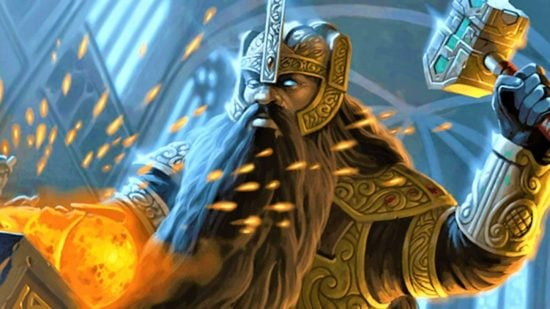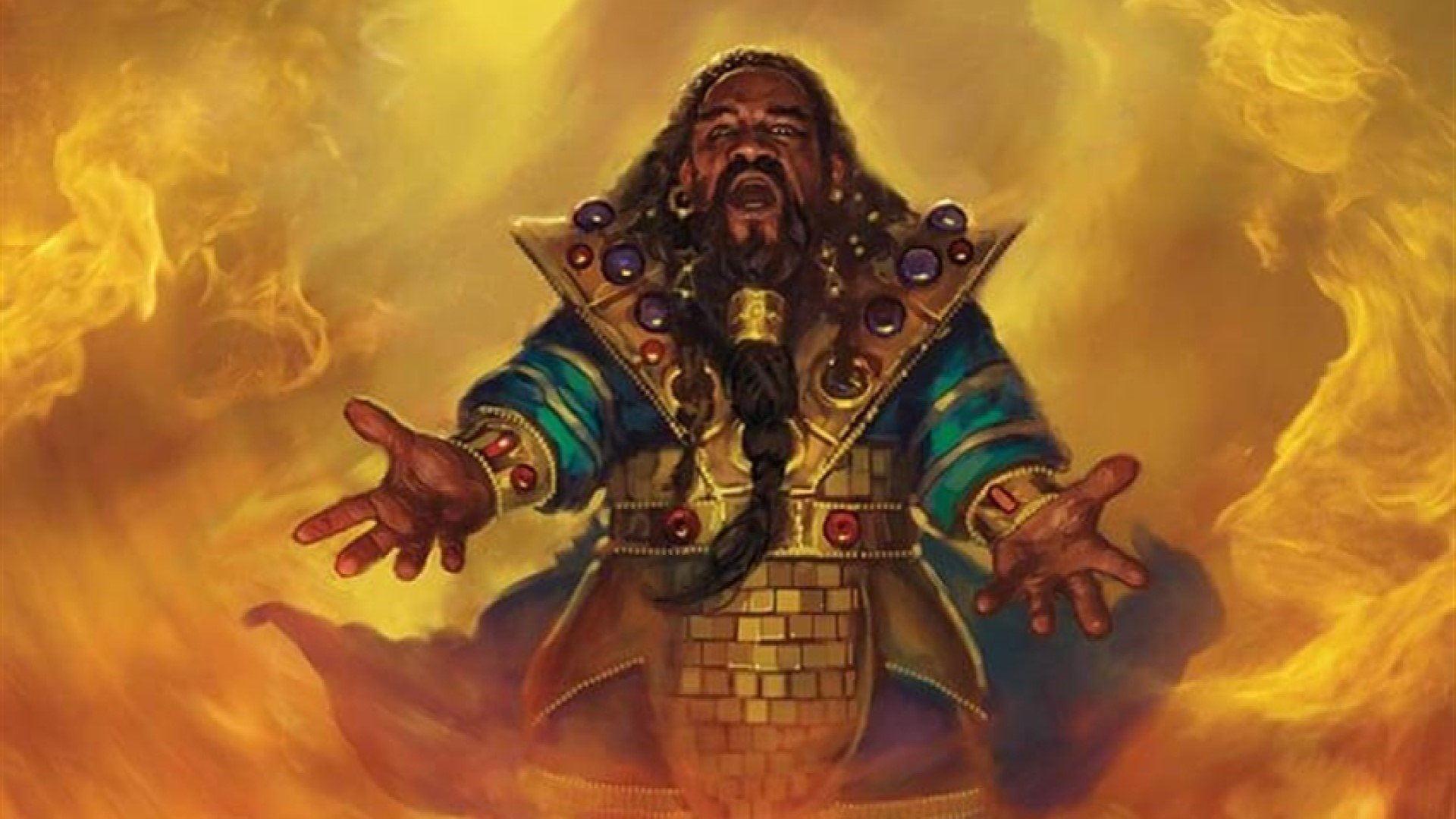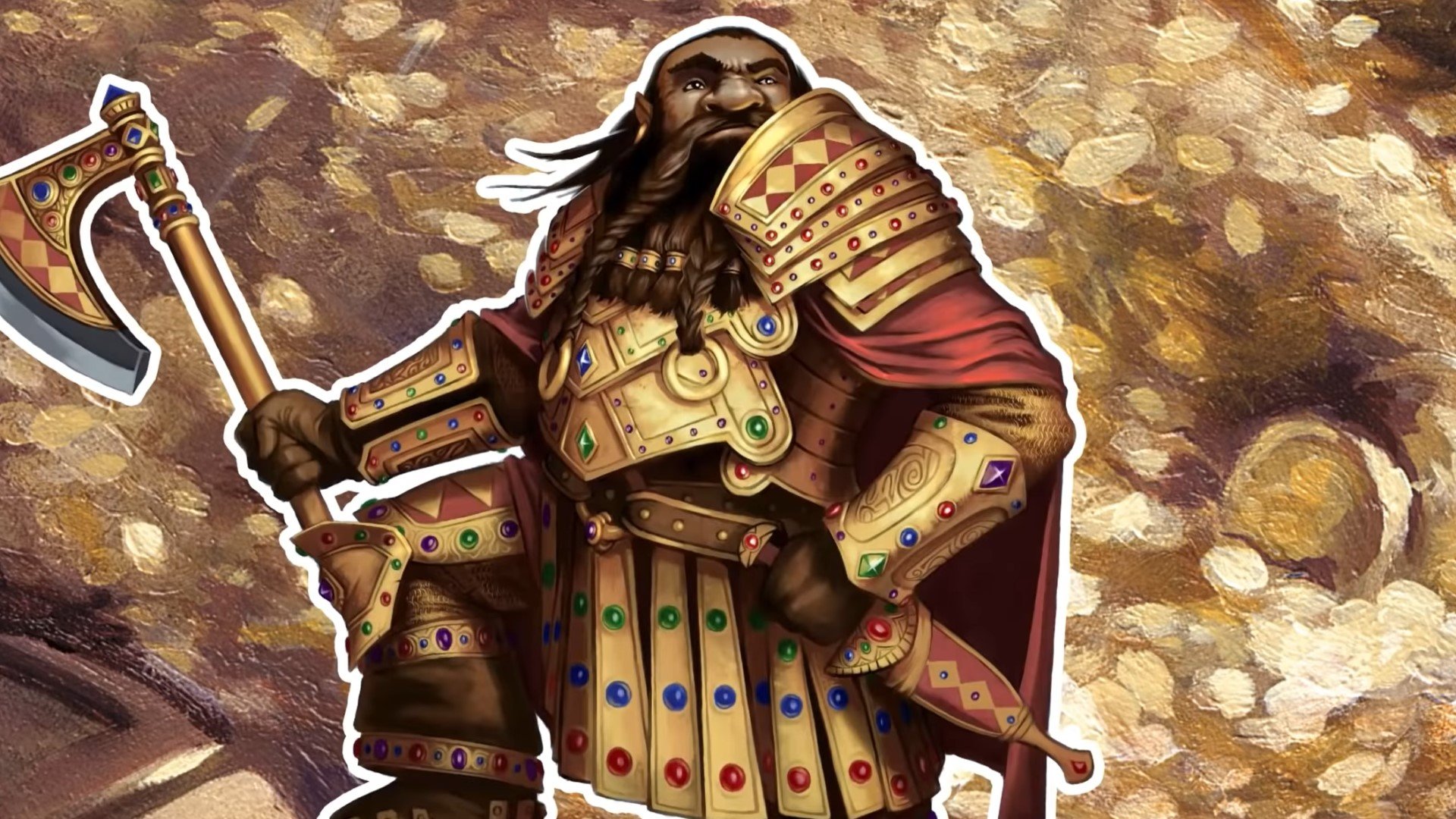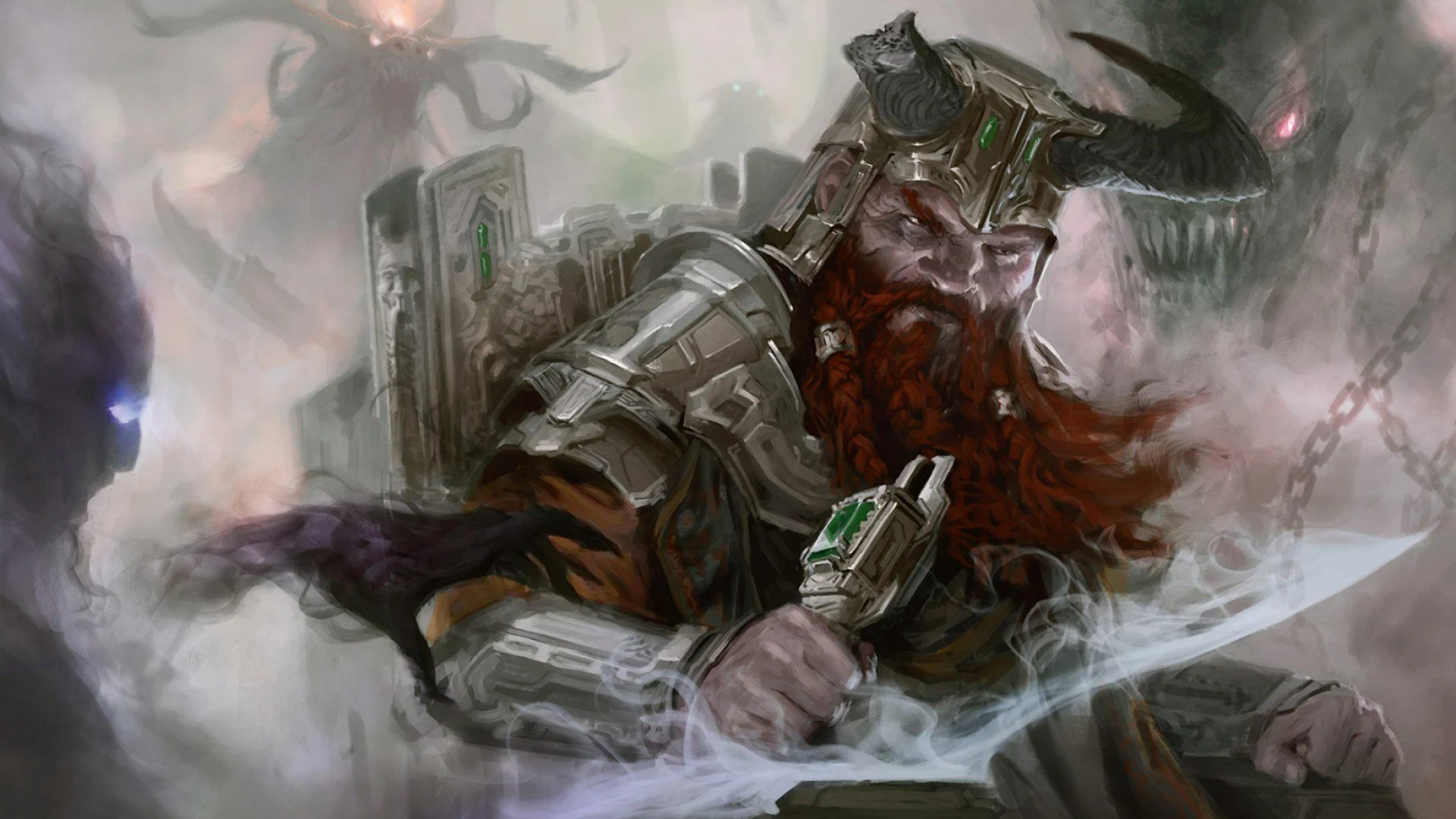The DnD Forge Cleric sees something holy in smithing. While other devout party members worship abstract concepts like life and death, Clerics of the Forge Domain work with tangibles. They know the magic of crafting something by hand. They quest for lost relics and strive to craft ever more powerful creations. The Forge gods bless them with the power to create and destroy with the fires of the forge.
Below you’ll find all you need to create a character using the Forge Cleric 5e subclass. We’ll look at the best DnD races, 5e spells, and 5e feats to choose, as well as the unique features granted by this subclass. If you want more general Cleric info, be sure to stop by our DnD Cleric, DnD Cleric spells, and DnD classes guides first.
Forge Cleric features
Here are the subclass features for the Forge Domain:
- Forge Domain spells
- Bonus proficiencies
- Blessing of the Forge
- Channel Divinity: Artisan’s Blessing
- Soul of the Forge
- Divine Strike
- Saint of Forge and Fire
Forge Domain spells
Level: One
Your divine domain grants you a certain number of spells. These are always prepared, and they don’t count towards the spells you can prep each day. Here are the Forge Domain spells:
| Cleric level | Spells |
| 1 | Identify, Searing Smite |
| 3 | Heat Metal, Magic Weapon |
| 5 | Elemental Weapon, Protection From Energy |
| 7 | Fabricate, Wall of Fire |
| 9 | Animate Objects, Creation |
Bonus proficiencies
Level: One
Naturally, Forge Domain Clerics know their way around a hammer and anvil. This means they have proficiency with heavy DnD armor and smith’s tools from the get-go.
Blessing of the Forge
Level: One
Forge Clerics can turn everyday armour and DnD weapons into something magical. At the end of a long rest, your Cleric can touch an ordinary suit of armour or weapon (simple or martial). The item fills with magic; armour gains plus one to its armour class, and a weapon gains a plus one bonus to attack and damage rolls.
This effect lasts until the end of your next long rest. The magic also dissipates if you die, just in case you needed more reasons to stay alive.
Channel Divinity: Artisan’s Blessing
Level: Two
The different domain Clerics manage to use their Channel Divinity ability in a variety of ways. The Forge Cleric can use it to create simple, non-magical items. Simply spend an hour on a ritual, and you’ve got a new bit of equipment. It’ll pop up within five feet of you on an unoccupied surface.
There are a few restrictions on what you can create this way. The item must be at least partly made of metal, and it can’t be worth more than 100 gold pieces. To complete the ritual, you need to have metal (it can include coins) with a value equal to the item you want to create. So, if you want to craft 15 new arrows for the party’s DnD Ranger, you’ll need 15 gold pieces’ worth of metal. Additionally, you can use this ability to duplicate items, but you’ll need the original for the ritual.
Soul of the Forge
Level: Six
Soul of the Forge makes your Cleric resistant to fire damage. It also grants a plus-one armour class bonus for wearing heavy armour.
Divine Strike
Level: Eight, 14
The holy power of the forge can make your weapons stronger. From level eight Divine Strike lets you add 1d8 fire damage to a target when you hit it with a weapon attack. This changes to 2d8 when you reach level 14.
Saint of Forge and Fire
Level: 17
Finally, the Forge Cleric becomes totally immune to fire damage. Additionally, while wearing heavy armour, they become resistant to bludgeoning, piercing, and slashing damage from non-magical attacks.
Tips for building a Forge Cleric
All Clerics rely on Wisdom to cast spells, and Constitution is essential for keeping them alive in combat. Forge Clerics also need to consider their Strength DnD stat, as they’ll need it high enough to wear heavy armour.
If you’re choosing races from the Player’s Handbook, we recommend the DnD Dwarf as first choice, either choosing the Hill Dwarf subrace for its Wisdom boost or the Mountain Dwarf for the Strength increase. If a Dwarf that loves smithing feels too stereotypical for you, the Variant Human 5e is also a decent option, giving you stat flexibility and an early feat.
Looking beyond the Player’s Handbook, the Warforged 5e race from Eberron: Rising From the Last War seems like an obvious choice for a Forge Cleric. Constitution is its main stat, and it benefits from armour class boosts, plenty of resistances, and proficiencies in many kinds of armour. As far as tanky Clerics go, it’s a pretty good choice.
You’ll gain some handy spells from the Forge Domain, but there are plenty of others the Forge Cleric should consider picking up.
If you’re looking for 5e spells with the right flavour, go for spells with an element of craft, metal, or fire to them. Mending isn’t the most widely useable cantrip, but it fits the Forge Cleric perfectly. You probably will get more use out of aggro spells like Sacred Flame and Blade Barrier, though. This is a subclass that can definitely get involved in a few scraps.
You should also consider choosing spells that give your Forge Cleric general utility. Many parties see the word ‘Cleric’ and hear ‘healer’, so you may be their go-to for restoring and protecting hit points. Consider picking up Spare the Dying, Cure Wounds, or Healing Word. Additionally, Spirit Guardians and Spiritual Weapon are top-tier picks for any Cleric looking to deal damage.
Finally, let’s talk about feats. War Caster is our top choice here. It gives you advantage on Constitution saving throws to maintain concentration, and you don’t need a hand free for spellcasting on the battlefield (so you can afford to pick up a DnD shield). Feats that boost your ability scores are also a good choice, as you want strong scores in Strength, Wisdom, and Constitution. Something like Resilient will do nicely.
Your Forge Cleric is likely to end up on the frontlines, so feats that protect you from harm are also helpful. Shield Master, Heavy Armour Master, and Tough are all suitable.







